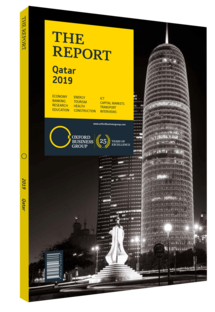Nasser Al Ansari, Chairman and CEO, Just Real Estate: Interview

Interview: Nasser Al Ansari
What impact will changes to foreign ownership regulations have on local property demand?
NASSER AL ANSARI: The means for foreign nationals to purchase property in Qatar are already in place in certain regards, but regulatory reforms will help to formalise, expand and better manage this process. Opening the market to foreign nationals will contribute to long-term demand for properties. As competition increases and the market matures, end-users will benefit as developers focus on quality to differentiate their products. This will also create more dynamic demand for different developments in Doha and, with continued investment in public infrastructure such as new roads and the Doha Metro, will contribute to urban growth. Moreover, property development will be more evenly distributed across the capital, rather than concentrated in areas such as The Pearl, West Bay and Lusail.
This demand will come from current Qatar residents and international investors alike. A significant portion of the expatriate community, particularly its Arab nationals, are long-term residents who have contributed to the economy and are now interested in purchasing residences. Qatar is also increasingly recognised as an internationally respected and secure destination for property investment. The introduction of visa-free entry for citizens of more than 80 countries in 2017 will also help to promote Qatar as a destination for investment, not just in real estate, but in all economic sectors.
How have developers adjusted their business strategies to supply and demand trends?
AL ANSARI: Qatar’s economy is experiencing a transformation, and this has influenced the direction of the real estate market and interest in local investment. Some concerns about a short-term oversupply in the A-grade property bracket are encouraging builders to think outside the box. The successful developers are the ones who are creating new services and taking more entrepreneurial approaches. By spending more time designing properties and selecting the best materials, for example, property developers can differentiate their goods in a competitive market.
The buyers’ market is both very healthy, as investors look for assets, and maturing, as end-users become increasingly aware of available choices. As customers look for more attractive options, residential rents have fallen in a number of areas in Doha to boost occupancy. Moreover, although Qatari buyers have traditionally preferred larger, older villas, there is a growing interest in apartments in new, well-designed community projects that offer more integrated amenities and facilities.
In the long term the promotion of economic diversification and self-sufficiency will directly affect demand for commercial property as companies – particularly medium-sized enterprises – look for suitable office spaces. As that rental market becomes more competitive, we expect many businesses to relocate from smaller, less prestigious spaces, such as repurposed villas, to higher-quality projects.
Banks are increasingly cautious about providing mortgages, so developers also need to focus on providing customers with adequate finance, including flexible pricing plans and contract models. For example, Just Real Estate’s office development The E18hteen in Lusail offers tenants a rent-to-own option, which allows firms to lease a space for a certain number of years before completing its purchase.
What opportunities do international property assets offer developers to broaden their portfolios?
AL ANSARI: Many developers see such assets as a crucial way of bringing new products and investment opportunities to our customers. We have seen that many Qatari developers are still interested in buying internationally, and although there is a strong appetite for properties in a number of well-known European destinations such as London and Paris, there is an increasing shift towards other markets, such as Turkey.
You have reached the limit of premium articles you can view for free.
Choose from the options below to purchase print or digital editions of our Reports. You can also purchase a website subscription giving you unlimited access to all of our Reports online for 12 months.
If you have already purchased this Report or have a website subscription, please login to continue.

